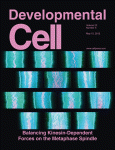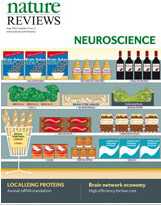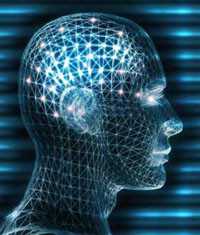Sci. Transl. Med:巨响引发慢性脑损伤机制探明
2012-05-24 刘纯 生物谷
爆炸时的巨响可能引发外伤性的脑损伤(TBI,traumatic brain injury)、精神病及长期的认知障碍。美国波士顿大学医学院等处的研究人员对曾听到爆炸前时的巨响或受过震荡性损伤的退伍老兵的大脑进行了检查,发现这些老兵都患有慢性损伤性脑病(CTE,chronic traumatic encephalopathy),这是一种tau蛋白相关的神经退行性疾病。 巧合的是,在受过震荡性损伤的年

爆炸时的巨响可能引发外伤性的脑损伤(TBI,traumatic brain injury)、精神病及长期的认知障碍。美国波士顿大学医学院等处的研究人员对曾听到爆炸前时的巨响或受过震荡性损伤的退伍老兵的大脑进行了检查,发现这些老兵都患有慢性损伤性脑病(CTE,chronic traumatic encephalopathy),这是一种tau蛋白相关的神经退行性疾病。
巧合的是,在受过震荡性损伤的年轻的业余足球运动员和专业的摔跤选手中也有相似的CTE。相关论文发表在5月16日的《科学转化医学》(Science Translational Medicine)杂志上。
研究人员制作了小鼠模型,即将野生型的C57BL/6小鼠暴露于一声巨响中,两周之后,小鼠就会产生CTE相关的神经病变。这种小鼠在没有发生宏观组织损伤和出血的情况下,会发生磷酸化tau蛋白病变、有髓鞘的轴突病变、微血管病变、慢性神经炎症、神经退行等现象。
记录大脑内的压力发现声波穿过小鼠的大脑,但并未引起微小的损伤。在巨响发生时,若将头部固定则可避免巨响引发的学习和记忆障碍。
研究结果表明,同样的致病因素导致了听过爆炸巨响的退伍老兵和受过脑伤的运动员发生CTE。而小鼠模型的建立为研究机制、生物标记物、诊断、治疗等开辟了道路。(生物谷Bioon.com)

doi:10.1126/scitranslmed.3003716
PMC:
PMID:
Chronic Traumatic Encephalopathy in Blast-Exposed Military Veterans and a Blast Neurotrauma Mouse Model
Lee E. Goldstein1,2,3,4,*, Andrew M. Fisher1,4, Chad A. Tagge1,4, Xiao-Lei Zhang5, Libor Velisek5, John A. Sullivan5, Chirag Upreti5, Jonathan M. Kracht4, Maria Ericsson6, Mark W. Wojnarowicz1, Cezar J. Goletiani5, Giorgi M. Maglakelidze5, Noel Casey1,3, Juliet A. Moncaster1,3, Olga Minaeva1,3,4, Robert D. Moir7, Christopher J. Nowinski8, Robert A. Stern2,8, Robert C. Cantu8,9, James Geiling10, Jan K. Blusztajn2, Benjamin L. Wolozin2, Tsuneya Ikezu2, Thor D. Stein2,11, Andrew E. Budson2,11, Neil W. Kowall2,11, David Chargin12, Andre Sharon4,12, Sudad Saman13, Garth F. Hall13, William C. Moss14, Robin O. Cleveland15, Rudolph E. Tanzi7, Patric K. Stanton5 and Ann C. McKee
Blast exposure is associated with traumatic brain injury (TBI), neuropsychiatric symptoms, and long-term cognitive disability. We examined a case series of postmortem brains from U.S. military veterans exposed to blast and/or concussive injury. We found evidence of chronic traumatic encephalopathy (CTE), a tau protein–linked neurodegenerative disease, that was similar to the CTE neuropathology observed in young amateur American football players and a professional wrestler with histories of concussive injuries. We developed a blast neurotrauma mouse model that recapitulated CTE-linked neuropathology in wild-type C57BL/6 mice 2 weeks after exposure to a single blast. Blast-exposed mice demonstrated phosphorylated tauopathy, myelinated axonopathy, microvasculopathy, chronic neuroinflammation, and neurodegeneration in the absence of macroscopic tissue damage or hemorrhage. Blast exposure induced persistent hippocampal-dependent learning and memory deficits that persisted for at least 1 month and correlated with impaired axonal conduction and defective activity-dependent long-term potentiation of synaptic transmission. Intracerebral pressure recordings demonstrated that shock waves traversed the mouse brain with minimal change and without thoracic contributions. Kinematic analysis revealed blast-induced head oscillation at accelerations sufficient to cause brain injury. Head immobilization during blast exposure prevented blast-induced learning and memory deficits. The contribution of blast wind to injurious head acceleration may be a primary injury mechanism leading to blast-related TBI and CTE. These results identify common pathogenic determinants leading to CTE in blast-exposed military veterans and head-injured athletes and additionally provide mechanistic evidence linking blast exposure to persistent impairments in neurophysiological function, learning, and memory.
本网站所有内容来源注明为“梅斯医学”或“MedSci原创”的文字、图片和音视频资料,版权均属于梅斯医学所有。非经授权,任何媒体、网站或个人不得转载,授权转载时须注明来源为“梅斯医学”。其它来源的文章系转载文章,或“梅斯号”自媒体发布的文章,仅系出于传递更多信息之目的,本站仅负责审核内容合规,其内容不代表本站立场,本站不负责内容的准确性和版权。如果存在侵权、或不希望被转载的媒体或个人可与我们联系,我们将立即进行删除处理。
在此留言














#Transl#
71
#Transl.#
56
#TRA#
0
#损伤#
56
#Med#
62